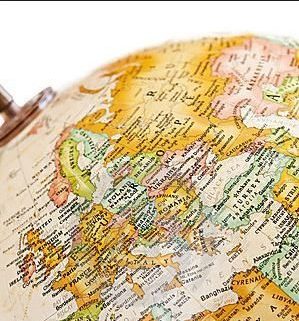A couple times a year, I feel the need to abandon civilization and contemplate the meaning of life, while accomplishing a great physical challenge. For me, this is a mandatory religious experience.
That?s why I was up at Lake Tahoe last week, completing a 100 mile hike in eight days, mostly over 8,000 feet, carrying a 60 pound pack. I fast while accomplishing this, eating only 600 calories a day of fruit and nuts. I?m down about ten pounds on the since I began.
Hint to readers: almonds have unique, hunger fighting chemical properties. Eat a handful before you go to sleep, and hunger pangs won?t wake you in the middle of the night. I lost about ten pounds, which works out to about one belt loop off the waist. I plan on doing some industrial strength eating this summer during my two-month European strategy luncheon tour, so I need to make some room.
My friends call this a death march, and worry about my health. I think of it as a cleansing and a general stocktaking, and I feel great! I always go alone. How many other 61 year olds do you know who are in condition to do this sort of thing? Sure, I might break my ankle someday, die of exposure, and have my bones scattered by wild animals. Who cares? It would be a good death. It?s worth it.
The scenery up there is so spectacular that I almost didn?t feel the pain. Almost. On more than one occasion, while gazing at the endless shades of blue the pristine waters offered, I tripped on a rock and almost fell flat on my face. Sorry, but a broken arm is not on the schedule this year. While hiking along the East Ridge, succeeding mountain ranges in northern Nevada explored every kind of purple.
I managed to summit each major peak around the body of water the Washoe Indians called ?da-ow-a-ga?, or edge of the lake, which they considered the origin of the universe. Those included Squaw Peak (8,885), Mt Tallac (9,735 feet), Monument Peak (10,067), and Mount Rose (10,776 feet). Snowfields were a bit of a challenge at the higher elevations this late in spring, but my trusty ice ax and crampons saw me through.
I was constantly reminded that I was in the ?Old West? by the many artifacts I encountered. Prominent granite boulders displayed prehistoric Indian petroglyphs. I found a few abandoned log cabins, complete with potbelly stoves and canned food from the 1950?s. Rusted out cast iron mining equipment was strewn about everywhere. Along the old Pony Express Trail one finds old horseshoes and the occasional ancient bottle turned purple by the sun.
Lake Tahoe supplied all of the water and bracing wood for the Comstock mining boom of the 1870?s. A hundred years ago, not a single tree was left standing, except for the southwest section of the lake owned by mining baron ?Lucky Baldwin? who won it in a card game and made it his private retreat. It was all covered in meticulous and colorful detail by a budding young newspaperman who went by the name of Mark Twain.
My ambitious goals often saw me hiking well into darkness. After the batteries died on my three backup headlamps, that flashlight app on the iPhone 5s proved a real lifesaver. It?s good for a full hour, and illuminates the eyes of on looking wildlife a bright yellow up to 200 yards.
I often looked behind to make sure a mountain lion was not stalking me. Don?t worry. Only 20 people have been killed by mountain lions in California over the last 100 years. More than that are killed by their pet dogs in the Golden State every year. Besides, I am good at staring down mountain lions and black bears. It is just a matter of attitude.
I still wanted to follow the market and write my daily newsletter during my ordeal. So I repaired nightly to my lakefront estate at Incline Village to soak in the hot tub and re-bandage my feet. The slow business recovery has made its way here, with some commercial properties vacant for years now occupied by a new generation of entrepreneurs. Nothing beats creative destruction as an economic accelerant. God bless America!
The old souvenir stand for the Ponderosa Ranch, of the TV series Bonanza fame, is now the Tunnel Creek Station Caf? and bike rental. Good luck to Patty and Max! The nearby Flume Trail offers some of the best mountain biking in the world. I know because I was almost run over several times (sorry, sir!).
Of course, I am not just thinking great thoughts during these hikes. An endless series of economic and market data points are constantly churning around in the back of my mind, and I occasionally reach a ?Eureka? moment. I keep a pen and notebook in my pack so I don?t forget these great revelations.
It was during a similar expedition up the face of the Matterhorn in the Swiss Alps (14,692 feet) last summer when I realized that the S&P was beginning a long run up that would take it to 1,600 by April. I?ll never forget the expression on my guide?s face when I stopped midpoint through an abseil and started feverishly writing. That little maneuver cost me a bottle of schnapps. The readers and Trade Alert followers prospered mightily.
What is this year?s ?Eureka? conclusion? The stock market could keep going up until August. After that, stocks will be unable to ignore an impending ?taper?, or the complete end of quantitative easing. The bond market told us as much last week.
I have been doing this sort of thing since I was 22, and in somewhat better shape. Then, I was one of the few foreigners attending karate school in Japan, learning the iron discipline and focus of samurai warriors, known as ?bushido?.
Every February, we underwent ?kangeiko?, or ?winter training. This involved the entire class running the five miles around Tokyo?s Imperial palace in a pack, suffering freezing temperatures, barefoot, every day for a week. When we returned to the dojo, we where hosed down with ice-cold water, our feet senseless, bloody stumps. Then we would train for three more hours.
The idea was that the extreme pain and exhaustion would deliver insights into ourselves and the world at large. It worked. At least one current reader endured the experience with me and is still alive. Remember that, David? By the way, thanks for breaking my nose.
On the way home I stopped in Sacramento for a well deserved double cheeseburger, fries, and chocolate shake at In and Out Burger. You can?t take this diet and health thing too seriously.
Well, next week, it is back to normal. I?ll be glued in front of my screens scouring the planet for the next great trading opportunity, although, I?m not sure I?ll find many. Buying market tops is against my nature. What are you supposed to do when all of your forecasts and predictions come true? I have a feeling that the answer is not to make more forecasts and predictions.
Perhaps, the right answer is to take another hike.





















